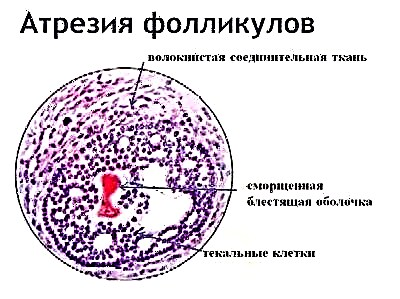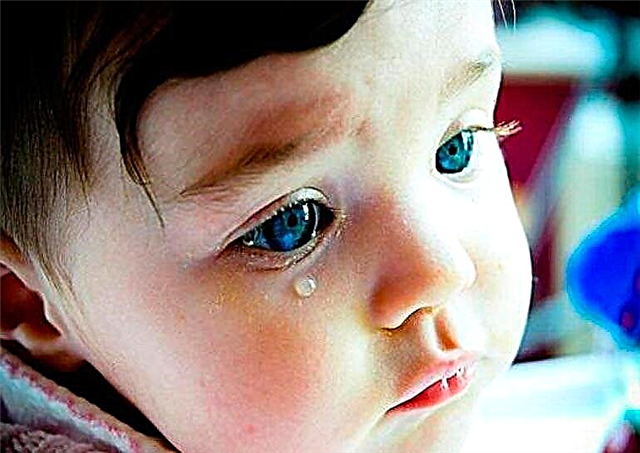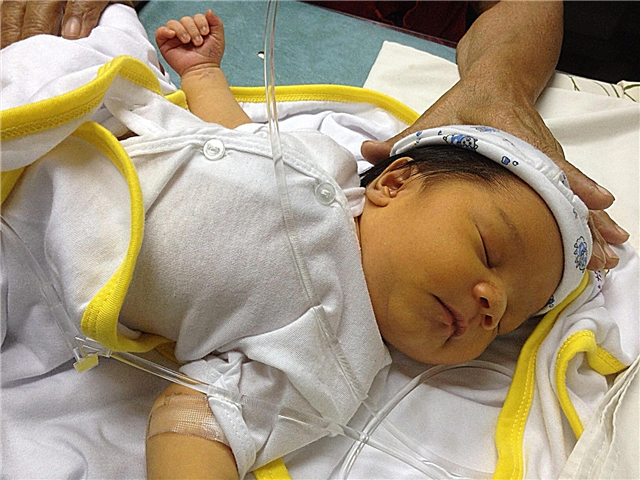
The female body is much more complex than it might seem at first glance. Many processes in it are controlled exclusively by hormones, and how well coordinated they are depends, for example, whether a woman will be able to conceive and bear a child, and how long her reproductive health will remain. One of these complex invisible processes is the formation of a dominant follicle in the ovaries.

What it is?
The follicle is a component of the female sex glands. Follicles are formed even when the girl develops in the mother's womb. By the time of birth, newborn girls have the richest supply of germ cells - from half a million to a million. Each immature egg is in several membranes, which together form a kind of bubble or sac, and it is called a follicle.
As soon as a girl begins the process of puberty, the production of the hormone FSH starts in her body - it is responsible for the growth of follicles, and folliculogenesis begins - a continuous and constant process of maturation and death of follicles. This continues until menopause, until the ovarian reserve runs out.


Follicles are different. Those that nature generously endows the girl from birth are very small, they cannot be seen with the naked eye. They are called primordial. Under the influence of FSH, they begin to grow and become preantral, and then some of them will be destined to become antral, that is, having a cavity with liquid contents inside. Antral follicles are formed at the very beginning of the menstrual cycle, after menstruation, they can already be detected on an ultrasound scan and counted. But none of the listed types of follicles makes a woman fertile. In order for the probability of pregnancy to occur, a mature and full-fledged egg is needed, and only one type of follicle can give it - dominant or dominant.
Antral follicles at the beginning of the cycle grow in both ovaries. However, by the 7-8th day of the cycle, one of them becomes more noticeable, it grows and develops faster than its antral counterparts. This is the dominant, that bubble, which is to ensure ovulation in the current menstrual cycle. As soon as it is determined, the woman's body throws all its strength into its growth, and the development of the remaining follicles is inhibited.
This is very important to save the ovarian reserve, because the number of follicles given to a woman by nature for her entire life is not replenished.

The dominant follicle can be located in the right or left ovary. Sometimes (quite rarely) there is such a phenomenon as double ovulation, in this case there are two such follicles and they are located either in one or in different ovaries. Inside the dominant vesicle, a cavity filled with liquid expands every day, an egg cell grows in it. An egg-bearing tubercle forms on the surface of the "sac".
By the middle of the cycle, when the follicle reaches its maximum size, under the action of the hormone LH and estrogen, its shell becomes thinner, it bursts and releases the female reproductive cell. The egg cell begins to exist independently in the fallopian tube and within 24-36 hours it can be fertilized... If this does not happen, then the germ cell dies, and the probability of pregnancy will become real now only in the next menstrual cycle, after the rupture of the next dominant follicle.
The process of rupture of the follicular membrane and the release of the germ cell is ovulation.

The remnants of the follicular membranes after ovulation are grouped and begin to form the corpus luteum - a temporary gland designed to produce progesterone. If pregnancy does not occur, the corpus luteum resolves after 10-12 days, and after another 2 days, against the background of a decrease in progesterone levels, menstruation begins. Everything is repeated from the beginning.
Thus, without a dominant follicle, conception is impossible, and any violations in the stages of folliculogenesis that do not lead to the development of the dominant, cause a violation of its rupture, can cause infertility.

Quantity and dimensions
Nature has ordered that about 450-500 sex cells were assigned to a woman for her entire life. This means that from the beginning of puberty until menopause, this supply should be enough to ensure monthly menstruation and conception of offspring. therefore in the vast majority of cases, 1 dominant follicle matures in one cycle in a woman who does not take hormones. If 2 such "bubbles" are found in the same ovary or different, then there are chances of multiple pregnancy.
There are situations when one dominant follicle is not enough. These include assisted reproductive technologies such as IVF. In order for doctors to be able to fertilize in the laboratory and transfer embryos into the uterine cavity, more than one egg is required. Therefore, in the IVF protocol, hormonal stimulation of the ovaries is carried out. After taking certain drugs in a woman in the follicular phase, 3, 4, and 5, or more dominant follicles are found. The more they can be obtained, the higher the chances of getting pregnant with the help of reproductive specialists.


The size of the dominant vesicle plays an important role. If for antral follicles, which are assessed by ultrasound at the very beginning of the cycle, an indicator such as quantity is more important, then quality is also important for the dominant follicle. The dominant vesicle begins to be determined on average on the 7th day of the menstrual cycle (if counted from the first day of menstruation). Further, its dimensions can be quite individual, but there are also average statistical norms by which you can track the dynamics of development by days of the cycle:
Diameter table "dominant"
Of course, a lot depends on the individual characteristics of the female body, but folliculometry (a type of ultrasound of the ovaries) will help answer the main question, is it worth waiting for ovulation in this cycle. Size is also important for monitoring the effectiveness of hormone treatment if a woman is undergoing it.
Therefore, the growth of the follicle is regarded more as a response of the ovaries to stimulation, as an indicator that the internal processes in the female body are normal. It is not necessary to draw conclusions about when to wait for ovulation only by the size of the follicle.

With a size of 15 mm, according to statistics, ovulation will occur only after 4-5 days, but in practice everything is possible, because the growth rate of the bubble can slow down, accelerate, and it can stop developing altogether on any day of the cycle at any size.
Growth measurements by day are presented for women not receiving hormonal treatment, with a regular, standard cycle of 28 to 30 days.
In women with a cycle of more than 30 days, ovulation occurs later than 14-15 days, and in women with a cycle of less than 28 days - earlier (12-13 days). Therefore, the first folliculometry should be completed immediately after the end of menstruation, and then the frequency of measurements will be prescribed by the attending physician.

Possible problems
A small follicle can cause a woman big problems, because in pathological conditions "dominant" a woman not only cannot conceive a baby, but also experiences a variety of inconveniences due to irregularities in her menstrual cycle.
Here are the most common problems.
Persistence - the dominant bubble appears on time, is well defined, and grows normally. But on the day of the expected ovulation, it does not break. If the follicle does not burst, the oocyte inside dies after a few days. Conception is impossible. The reasons for which the dominant follicle does not burst can be different, but they are usually based on insufficient levels of the hormone LH. The follicle continues to be determined on the ovary on the right or left, and before the next menstruation, it is delayed. Often, a cyst forms from a persistent follicle.

- Cystic formation - The fluid cavity is usually formed as a result of hormonal disruption, after an abortion, the use of emergency postcoital hormonal contraception, as well as in violation of blood circulation in the ovarian tissues. Follicular cysts are benign; it is not required to rush to the surgeon for help. In 95% of cases, they generally dissolve on their own, without the help of doctors and without treatment for several menstrual cycles. Complications of cysts - ruptures and torsion of the legs can be dangerous. In this case, there is acute surgical pain, bleeding from the genital tract, the woman may need the help of a surgeon. With a follicular cyst, the size of the dominant vesicle can be higher than normal - 26, 27, 29 and more millimeters. Cases of cysts about 80 mm in diameter are known.

- Luteinization - a situation in which the corpus luteum begins to form before the rupture of the follicular membrane itself occurs, that is, until the moment of ovulation. In this case, the secretion of progesterone begins inside the dominant, further maturation of the follicle becomes impossible, ovulation does not occur, conception is impossible. Treatment is hormonal.

Atresia - a disorder of folliculogenesis, in which the dominant follicle, having reached a certain stage, does not grow, the process of oocyte maturation stops inside it (the egg does not mature). This also means that a woman cannot conceive a child in this cycle. If atresia becomes chronic, they speak of persistent infertility. The question of the expediency of stimulating ovulation with hormonal agents or IVF will be decided.

Can it be absent?
The absence of a dominant follicle should not always be considered a pathology. Normally, every woman has cycles without ovulation, in which none of the antral follicles becomes dominant... If, at the age of 20-30, ovulation is absent no more often than 1-2 times a year, this is considered normal. With age, the frequency of anovulatory cycles increases, and after 35 years, a woman can already have up to 5-6 such cycles in the norm.

Can a “dominant” be empty?
This phenomenon is called "empty follicle syndrome" or SPF. With it, an egg is not found at all inside the dominant follicles with normal growth. According to statistics, up to 7% of in vitro fertilization protocols end in failure for this very reason - in the follicular fluid taken during follicular puncture, not a single ovum suitable for fertilization is found.
In fact, many specialists in the field of reproductive medicine are skeptical about SPF, because they believe that the reason for the absence of eggs should be sought in the protocol itself, incorrectly selected dosages of drugs, as well as common mistakes during puncture. After changing the drugs, their dosages, and proper rest between the protocols, the situation is usually corrected, and the repeated SPF is given only in 1% of cases.
This 1% is a topic of special conversation. Usually, the true absence of oocytes is a genetic problem associated with a violation in the X chromosome. There is no cure.
But even with such a diagnosis, you can become a mother - IVF with a donor egg will help. Today such a service is in great demand and not only because women suffer from genetic abnormalities. Many build a career and miss a favorable age, and then face depletion of ovarian reserve and SPF.




